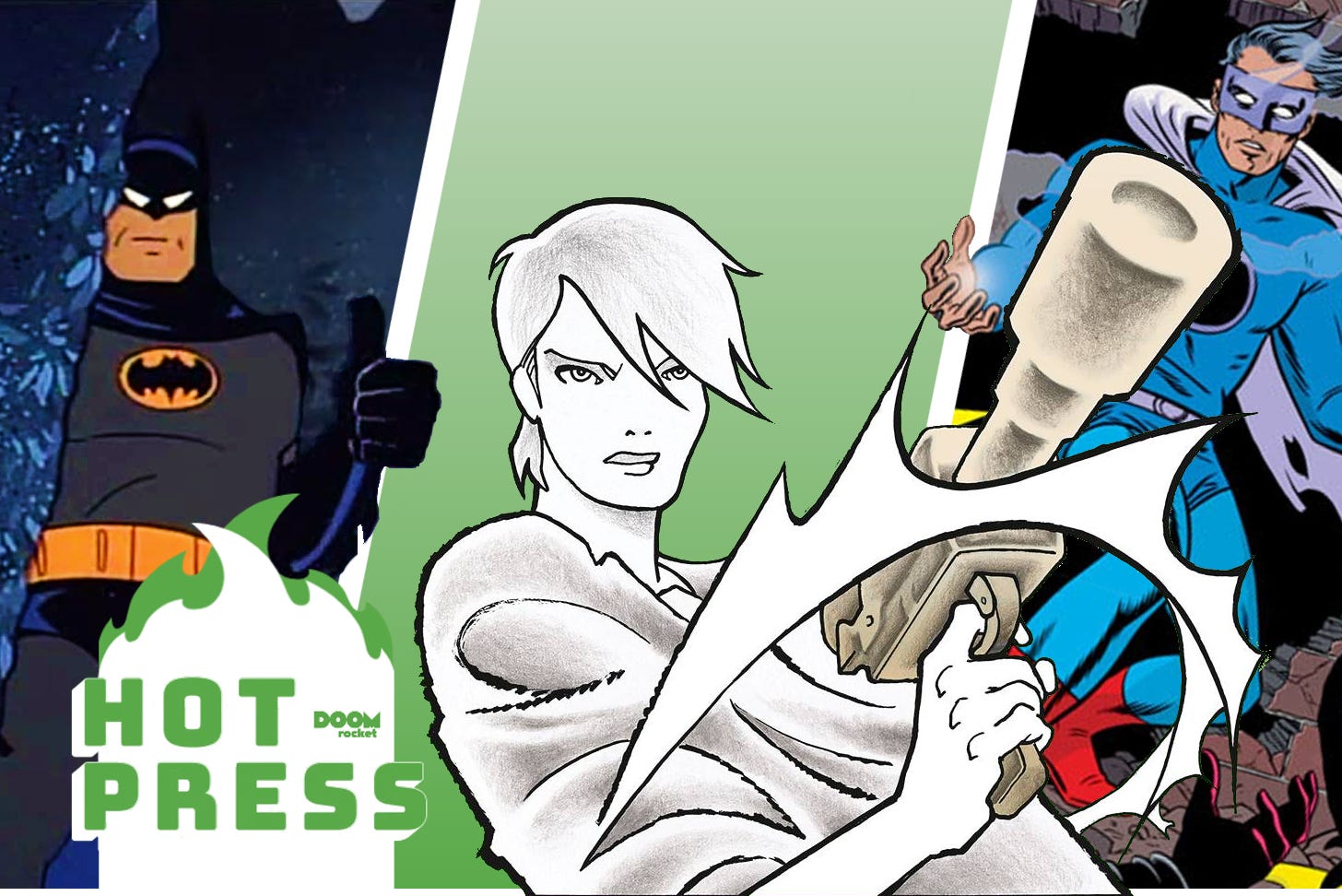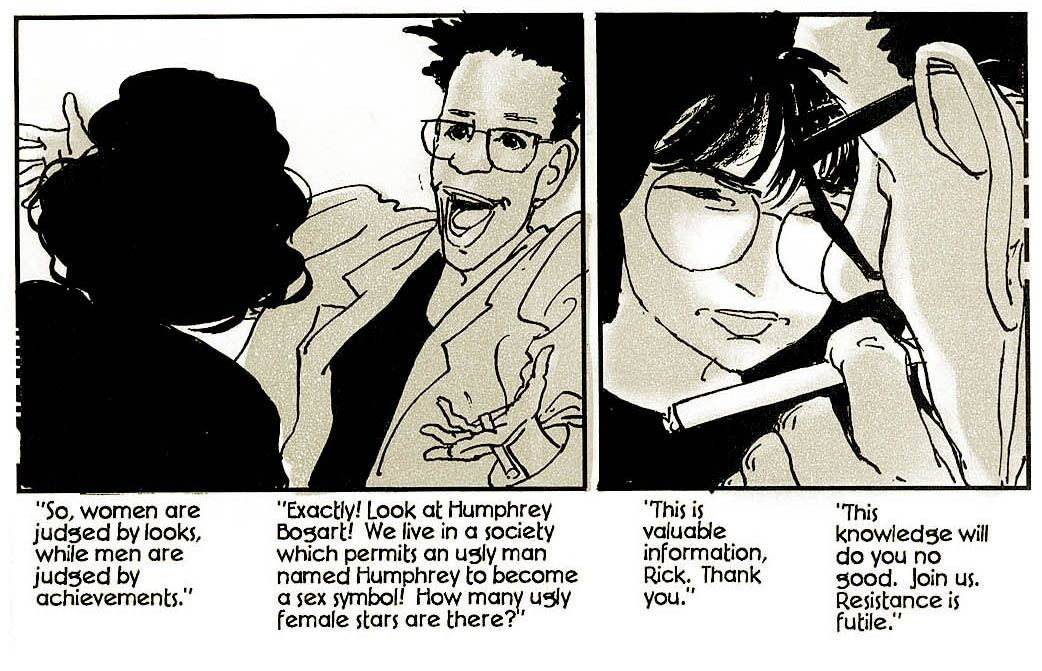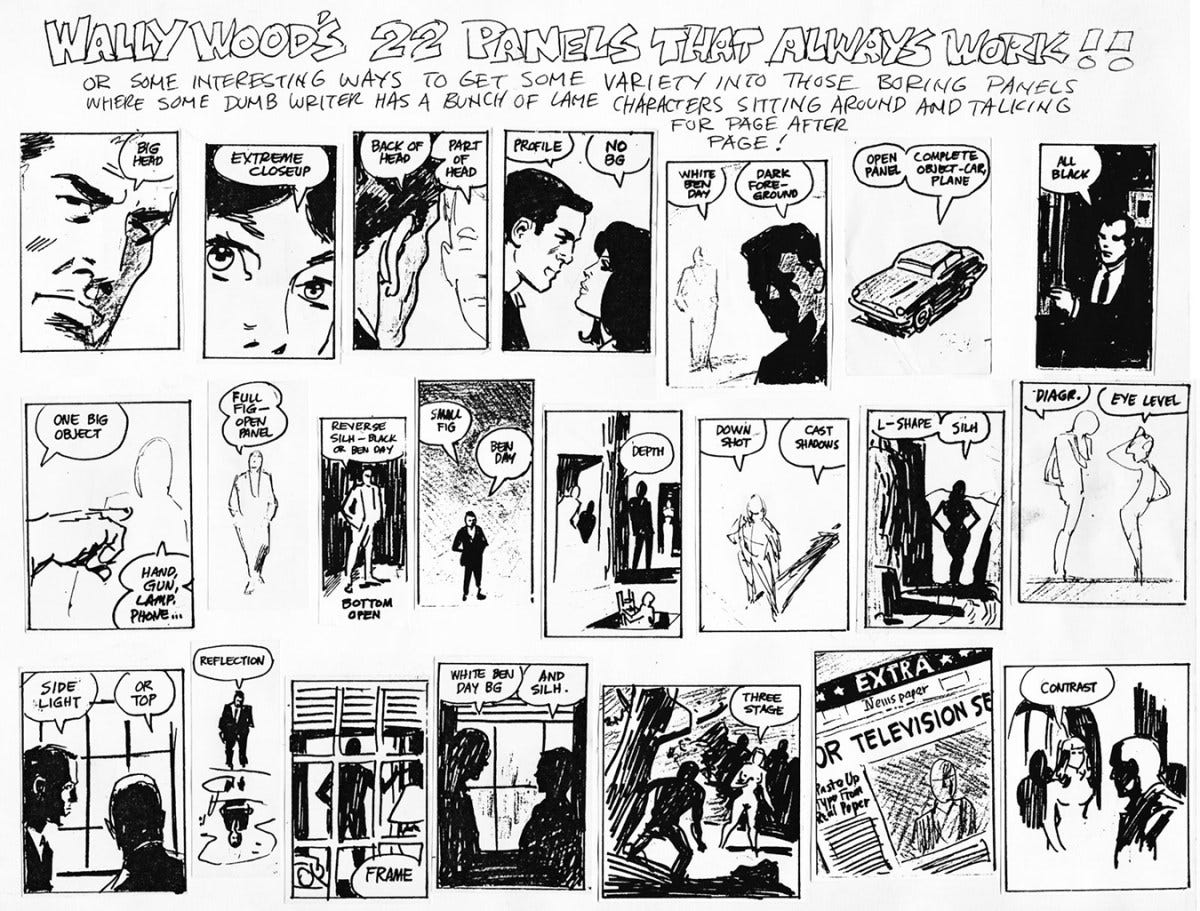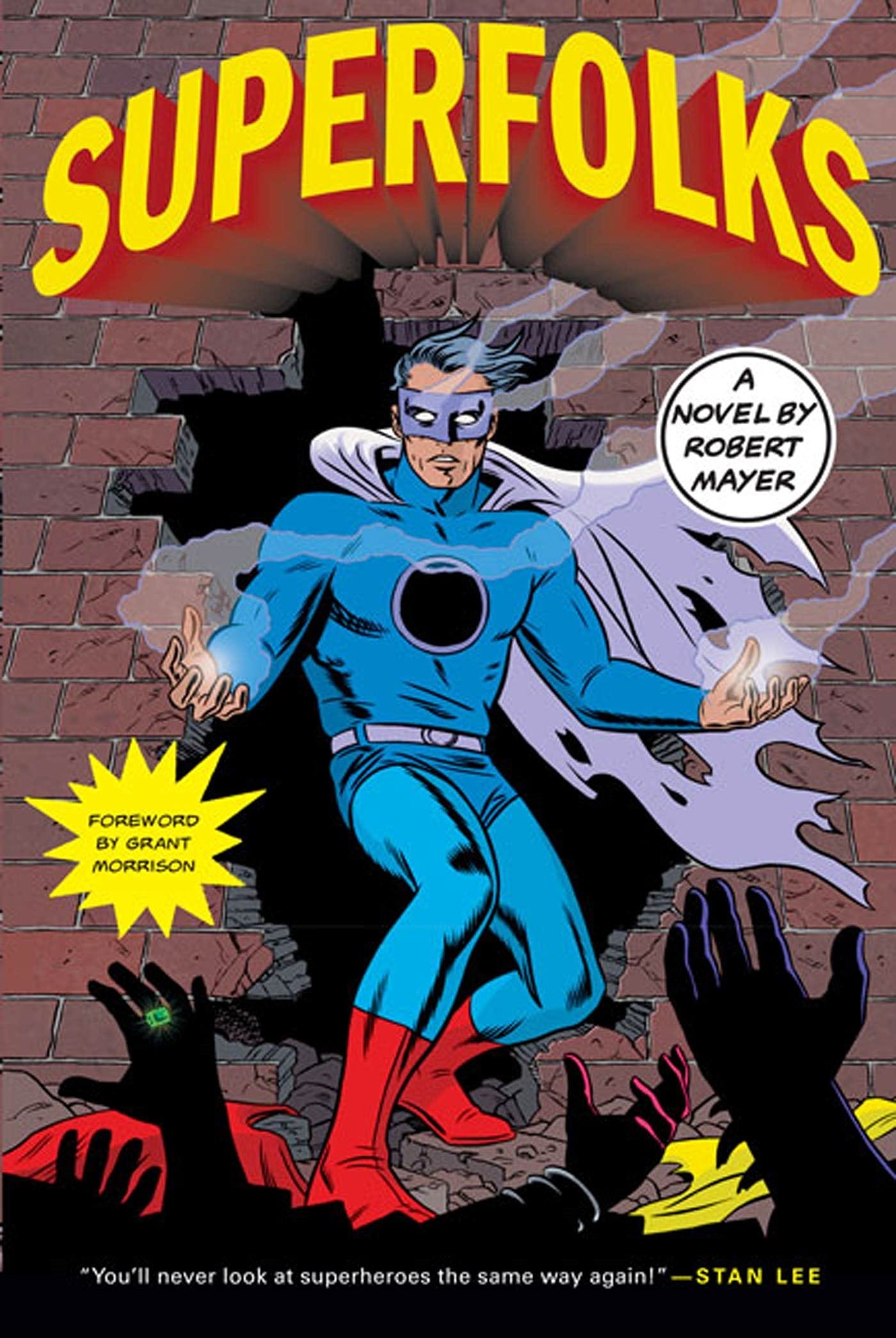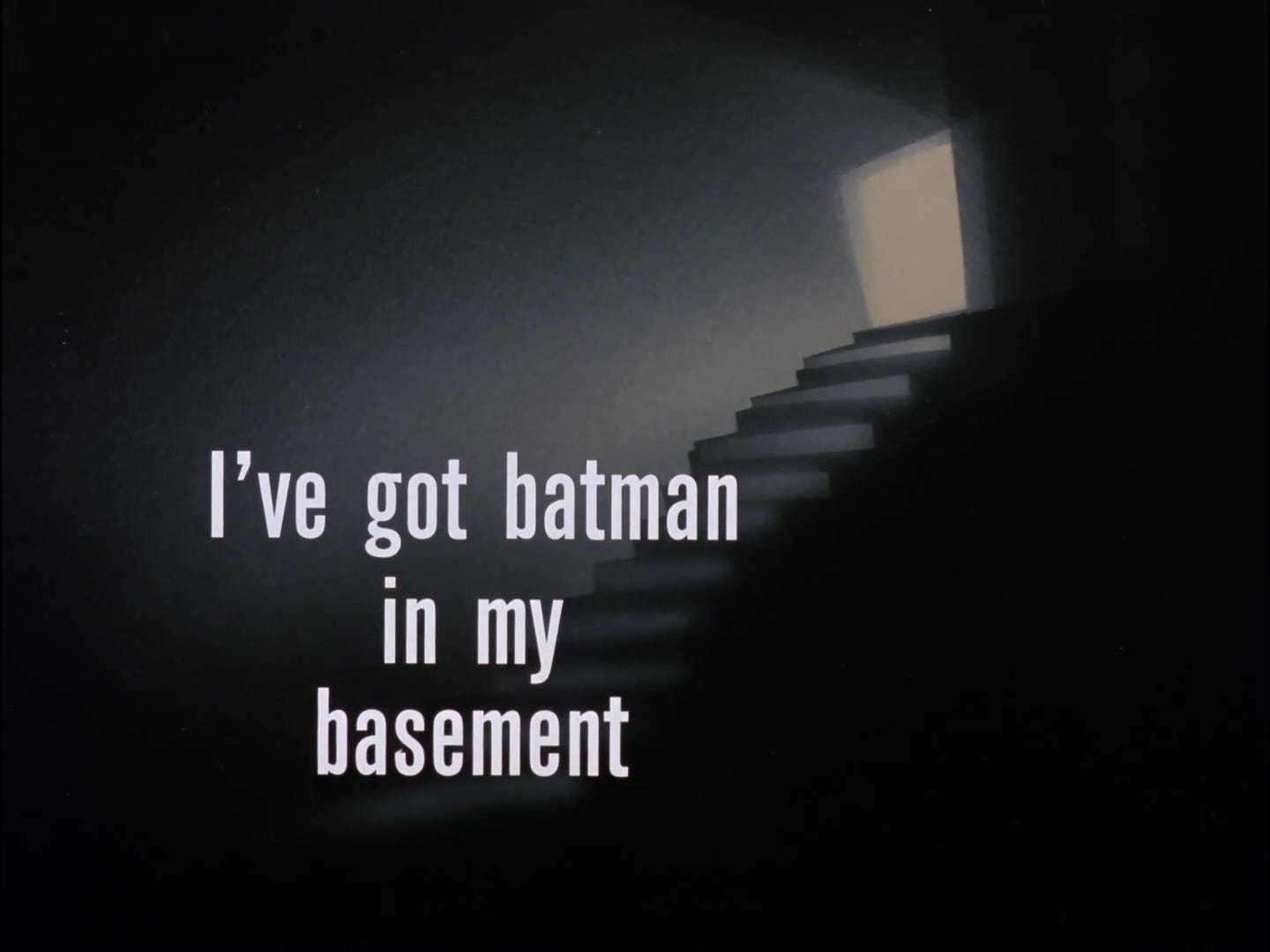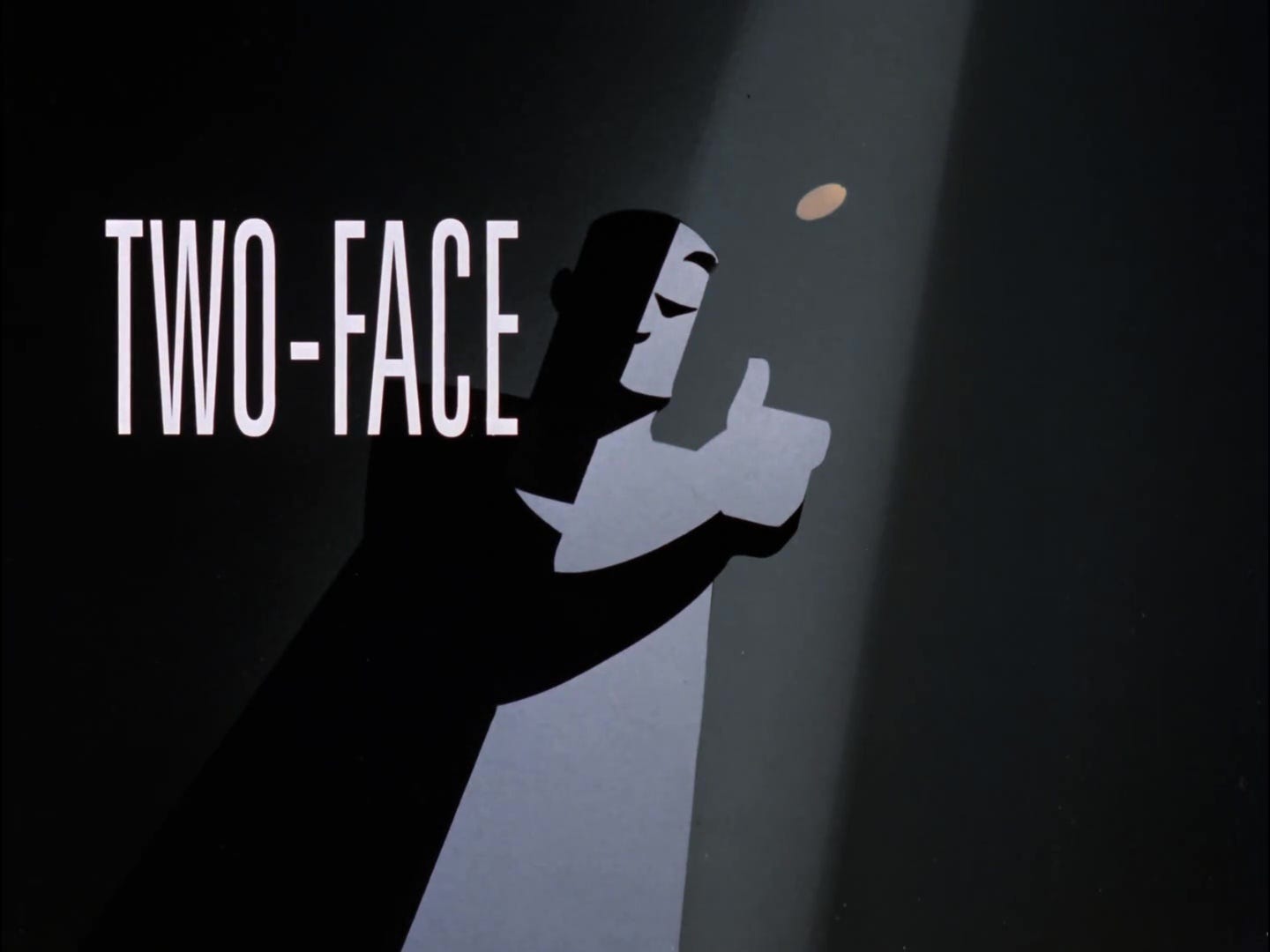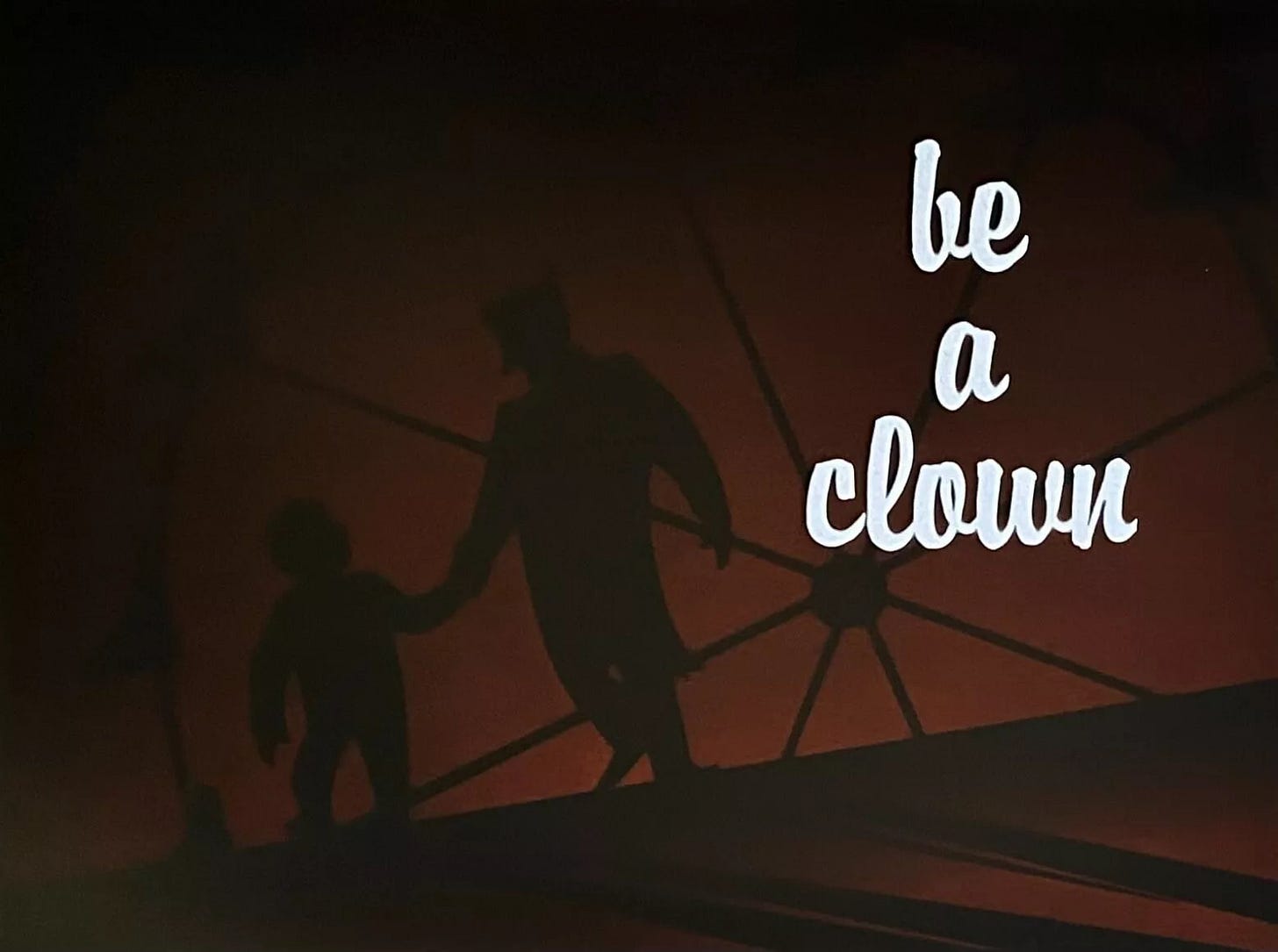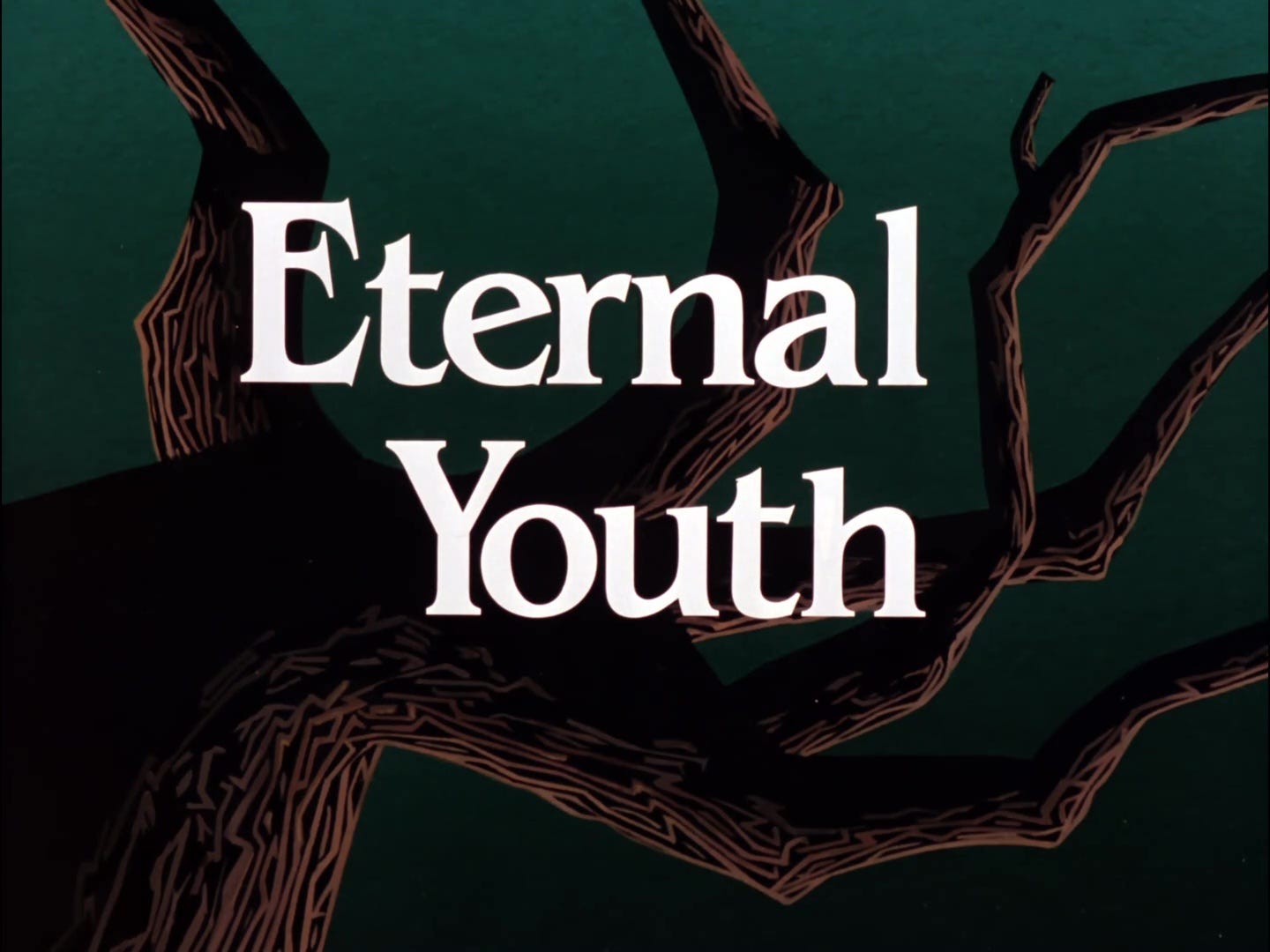HOT PRESS 1/8/25: New Year, new stuff, BTAS talk, no big deal
Here's a junk drawer newsletter to ease into 2025.
Braving the gauntlet of tentpole events, off-the-radar releases, and a non-stop avalanche of movies, TV, comics, and other stuff that's bad for you is DoomRocket's HOT PRESS. This week: easing into the New Year with thoughts bombing around the ol’ DR junk drawer.
Writing hasn’t come easy to me lately. I blame this mostly on how I spent New Year’s Day in an emergency room due to a sudden and alarming pain in my chest that was not, I’m happy to report, a heart attack — though my urgent care provider did not immediately rule it out, which is the reason why I wound up spending NYD in an ER sans George Clooney, which saps the charms of an emergency room pretty damn quickly, I don’t mind telling you.
As most men in their early forties tend to tell themselves, I like to think I take okay care of myself — I’m no athlete, but I exercise, take my supplements, and get in two miles of brisk walking almost every day (deadlines aren’t always the best for that last bit) — yet it seems “okay care” is not sufficient for me now that I approach *gulp* middle age. What do I do? More push-ups? (Rhetorical question; I know what I gotta do.)
So, while vigilance concerning my health has distracted me from work (coupled with medical advice that I stop trying to crush my work schedule with the fury of two Immortal Hulks), I am still compelled to write about stuff. Consider this week’s edition of HOT PRESS my New Year’s Hangover Edition, where I take it a bit easier on myself (and you!) and upend the junk drawer full of ideas, opinions, and other detritus I’ve had floating around in my head on a minute-to-minute basis for the last week or so. Let’s ease into 2025, yeah?
Oh, and before we get to it, a quick word of advice: please make sure to visit your doctor once in a while (twice a year, I’d recommend), eat your vegetables, and get some movement in every few hours — you’d be surprised how quickly and positively your body responds to these things, no matter how small or insignificant they seem. If finances keep you from seeing your local quack, explore local aid options in your area; your state may have in place programs designed to help you be a better you. (This, sadly, varies on your state, but you never know until you look.)
Some quick stuff I’m currently thinking about or am otherwise excited for:
The Next Picture Show just dropped its annual Top Films of the Year episode, and as ever, it’s a spirited and intelligent discussion of film among three of the best critics we have: Polygon film editor Tasha Robinson, recurring New York Times critic Scott Tobias, and freelancer/Rolling Stone contributor Keith Phipps (the latter two form The Reveal, another Substack you should be subscribed to). This year, my tastes substantially aligned more with Tobias’s selections than with anyone else’s, but listening to Robinson and Phipps highlight their picks was no less interesting or enjoyable. Smart people! Great podcast.
That reminds me, I also have a Best Films of 2024 list, and you can look through it here. DoomRocket’s Best Comics of 2024 list, which I cooked up with DR contributor Arpad Okay, is here.
My girlfriend is taking me to see Crouching Tiger, Hidden Dragon again later this week, this time with live music performed by the Chicago Symphony Orchestra. Not much else to say about that; I just wanted to brag.
The first issue of Michel Fiffe’s Death of Copra miniseries dropped this week, and while I have yet to read it in full, I was struck by these opening pages:
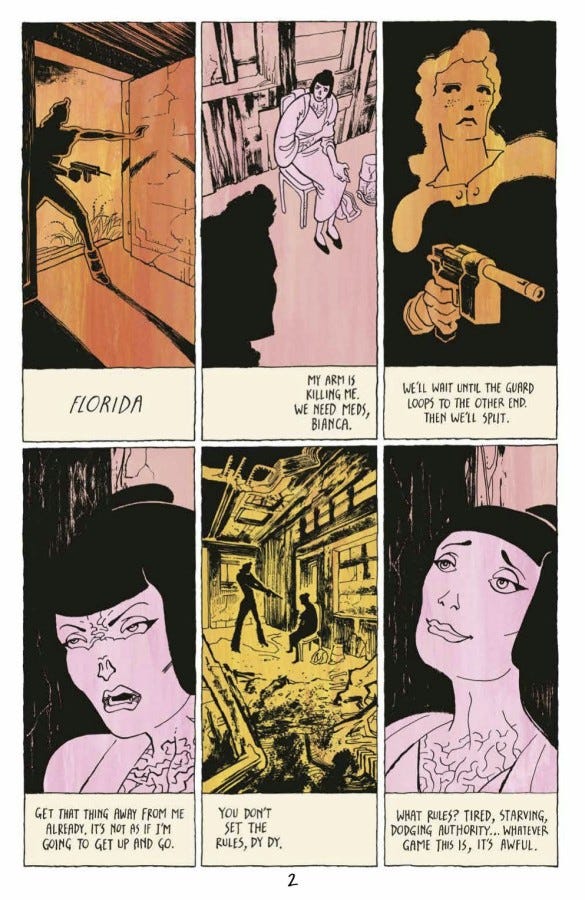
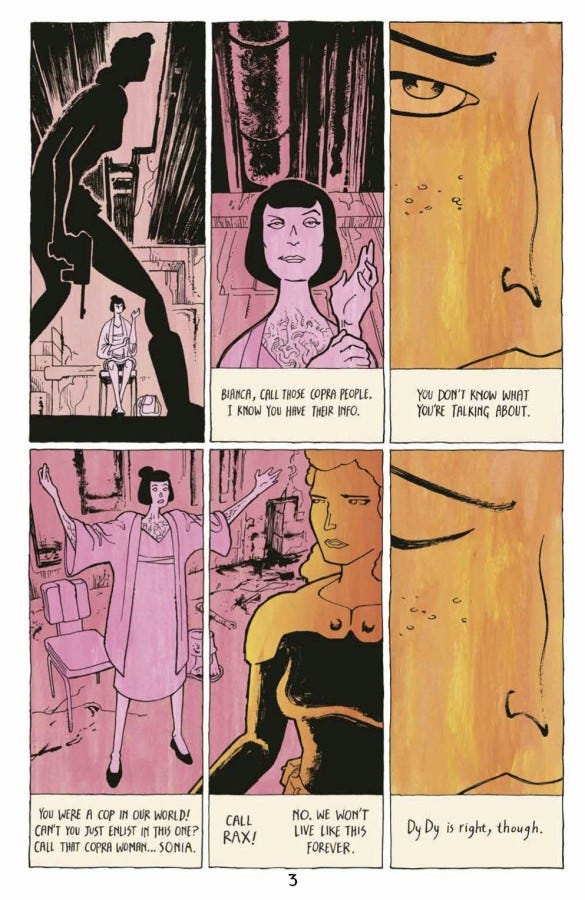
Fiffe’s caching dialogue in the captions underneath his images is a neat creative choice you’ve seen before in at least one other cool comic: Kyle Baker’s Why I Hate Saturn. The varied compositions, conversational style, and the position of the dialogue recall the snapshot framing that Baker used in that work. (For more on Saturn, read DR contributor Arpad Okay’s sterling review for The Beat.) I like these pages.
If you don’t, know that Fiffe doesn’t commit the entirety of Death of Copra #1 to this stylistic approach. He can’t; Copra is ballistic superhero havoc in the vein of Ostrander’s Suicide Squad and requires the pacing and open-page space of any proper action comic. Still, it’s a surprising, engrossing way to engage the reader and shows (to me, at least) that even though Copra is finally coming to an end, Fiffe continues to explore myriad approaches as a cartoonist in his own right. That’s both exciting and interesting in my book.
By the by, these panels by Fiffe and Baker strongly reflect Wally Wood’s “22 Panels That Always Work," one of the essential guides for any serious comic storyteller. Both Death of Copra and Why I Hate Saturn not only demonstrate the sophistication of Wood’s principles but also stretch them, reminding writers, artists, and cartoonists that any static page can — and should — convey a dynamic, cryptic, serene, or transformative experience akin to works in other mediums.
Those of you making comics who might be reading this: more of this creative energy; I’m begging.
I’m reading Superfolks by Robert Mayer, a 1977 novel about faded (re: aging, otherwise useless) superheroes struggling with middle age and obsolescence in an angrier, grimmer world ruled by the unscrupulous and criminal. In short: topical. Mayer’s book has long been a bit of loose trivia that’s bopped around comics’ more insufferable know-it-all circles for a while — did you know, he asks with condescension, that Alan Moore and Grant Morrison were heavily influenced by this otherwise esoteric book? Well, they were, and it’s really hard to ignore. I’m halfway through it, and I can’t shake the feeling that much of Watchmen, Miracleman, and (even though Morrison may disagree with me) Zenith were sprung almost fully formed from influences pulled from Superfolks, not to mention how much of the basic elements of Moore’s abandoned DC event series, Twilight of the Superheroes, aligns almost parallel to it. (You can listen to Moore’s proposal in full here; it’s wild and ridiculously voiced by artist Tom Scioli.) Fascinating to think that modern cape comics have been forever altered by such a small, snappy yarn. (Read it! Mayer’s writing is sharp, if distractingly anachronistic in his pop culture jabs.)
My girlfriend put Batman: The Animated Series on in the background following my impromptu ER visit. It was nice to once again be cozied by the oppressive darkness, operatic melodrama, and the occasional goofball silliness of my favorite animated series. It’s good meditative watching if you’re looking for passive entertainment and even better if you try to engage with it on its intellectual level, which, as millions of people have doubtlessly already told you, is sharper and more mature than most TV you’ll watch today. (I’m looking at you, Caped Crusader.) Some quick thoughts on a handful of the episodes I watched:
I've Got Batman in My Basement: Frank Paur directed some of the jankier-looking episodes of BTAS — Prophecy of Doom, The Terrible Trio, Be A Clown, others. These episodes were all compromised in one way or another by their off-model animation, squiggly character movement, delayed audio (be it dialogue or foley effects), etc. (He was frequently saddled by the lousier off-shore animation studios, though one wonders why he was so consistently unlucky.) This one’s no different. But it’s cute. Two kids rescue Batman after he’s poisoned by The Penguin and protect him by doing a Home Alone on the villain using the hero’s utility belt. Silly and broadly, deliberately, almost clinically kid-friendly (the kind of show Fox Kids always hectored the BTAS braintrust to make), but Paul Williams makes an effort to carry the episode (carrying slack for Kevin Conroy, who largely sits this episode out). The main kid tries to hook Batman up with his single mom at the end, which was cute.
P.O.V.: An inverse to I’ve Got Batman in My Basement and the ideal of what Batman: The Animated Series could be as a hybrid grown-ups/kids TV show: a ruminative, complex, and exciting episode that expands our awareness of Gotham City (and the city’s perception of Batman) through character conflict instead of criminal disorder. (Though there’s a bit of that in here, too.) A three-tiered tale about how a story can change depending on who’s telling it — Baby’s First Rashomon, and it’s terrific. (It also features the first appearance of Renee Montoya, who’s now a full-fledged member of the Justice League in the comics, if you can believe that; Harley Quinn can eat her heart out.)
Two-Face, Parts I & II: It’s almost poetic how a two-parter about the origin of Two-Face is this chaotic in terms of quality. “Part I” is directed by Kevin Altieri (who also handled P.O.V.), written by Randy Rogel (with story assist from series co-creator Alan Burnett), handily one of the more fascinating and disturbing character profiles in BTAS’s arsenal (which is saying something), and boasts a ferocious dual vocal performance by Richard Moll as Harvey Dent/Two-Face. Seriously, no one else but Moll matches peak-BTAS Conroy; how he closes out “Part I” guts me to this day, a perilously dramatic high. Then there’s “Part II,” which spends that dramatic capital on a dud episode that I recommend you skip (the animation and story work both take a nosedive, possibly due to WB swapping animation studios between episodes). Instead, hunt down and read “Two of a Kind,” a Two-Face-centric short by BTAS co-creator Bruce Timm, which also happens to be one of the best Bat-anythings we ever got.
Be A Clown: Another Paur episode, so bodies and faces go squiggly and insane. Still, that wonkiness kind of works for what is otherwise a pretty creepy Joker episode in which the Clown Prince of Crime befriends Jordan Hill (the son of Gotham Mayor Hamilton Hill) and shows him a few tricks of the trade. (“I've been thinking about a protégé!” he says.) The finale, set on a rollercoaster, is a fun reference to The Dark Knight Returns, with Joker tossing exploding baby dolls at Batman. It also puts Batman in the Chinese water torture cell made famous by Houdini, which is fun.
Eternal Youth: Fun, soapy, prescient episode that heavily implies that Alfred finally got some at a resort made to poison rich industrialists who profit from destroying the planet. He also turns into a tree. Big Alfred episode all around.
That's all I got for this week. Read any good comics lately? See any movies? Drop your new favorites, recommendations, and questions (any at all!) in the comments or The Chat. Or, heck, just shoot me a line: jarrod@doomrocket.com.




